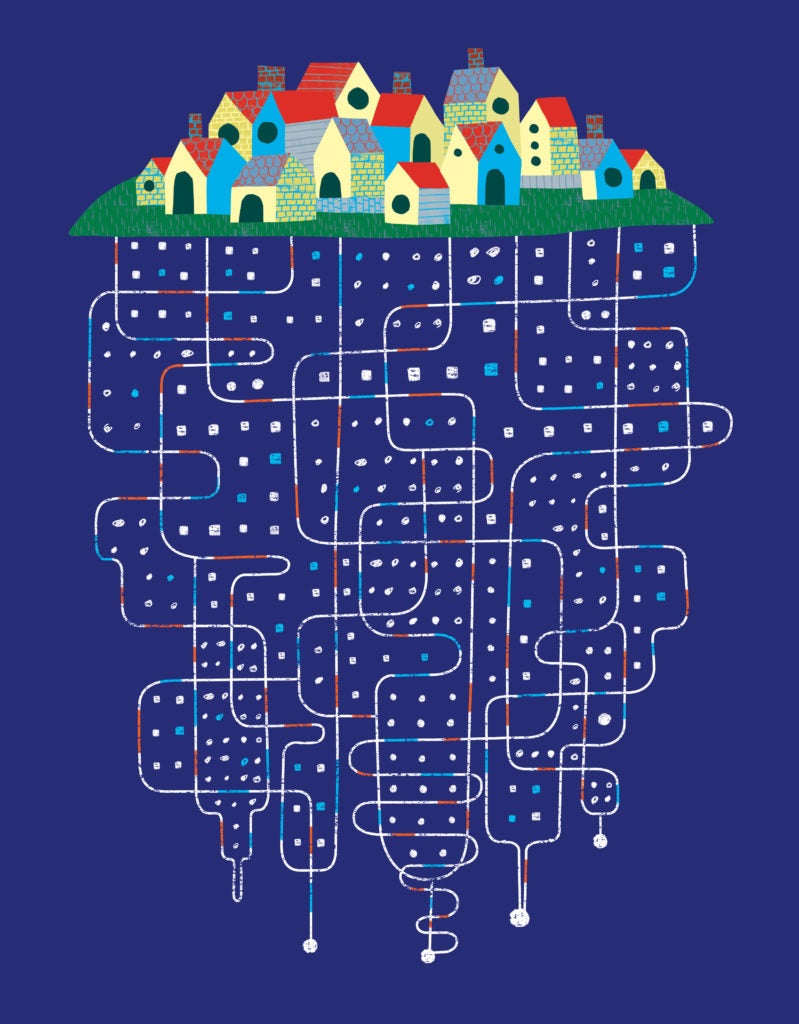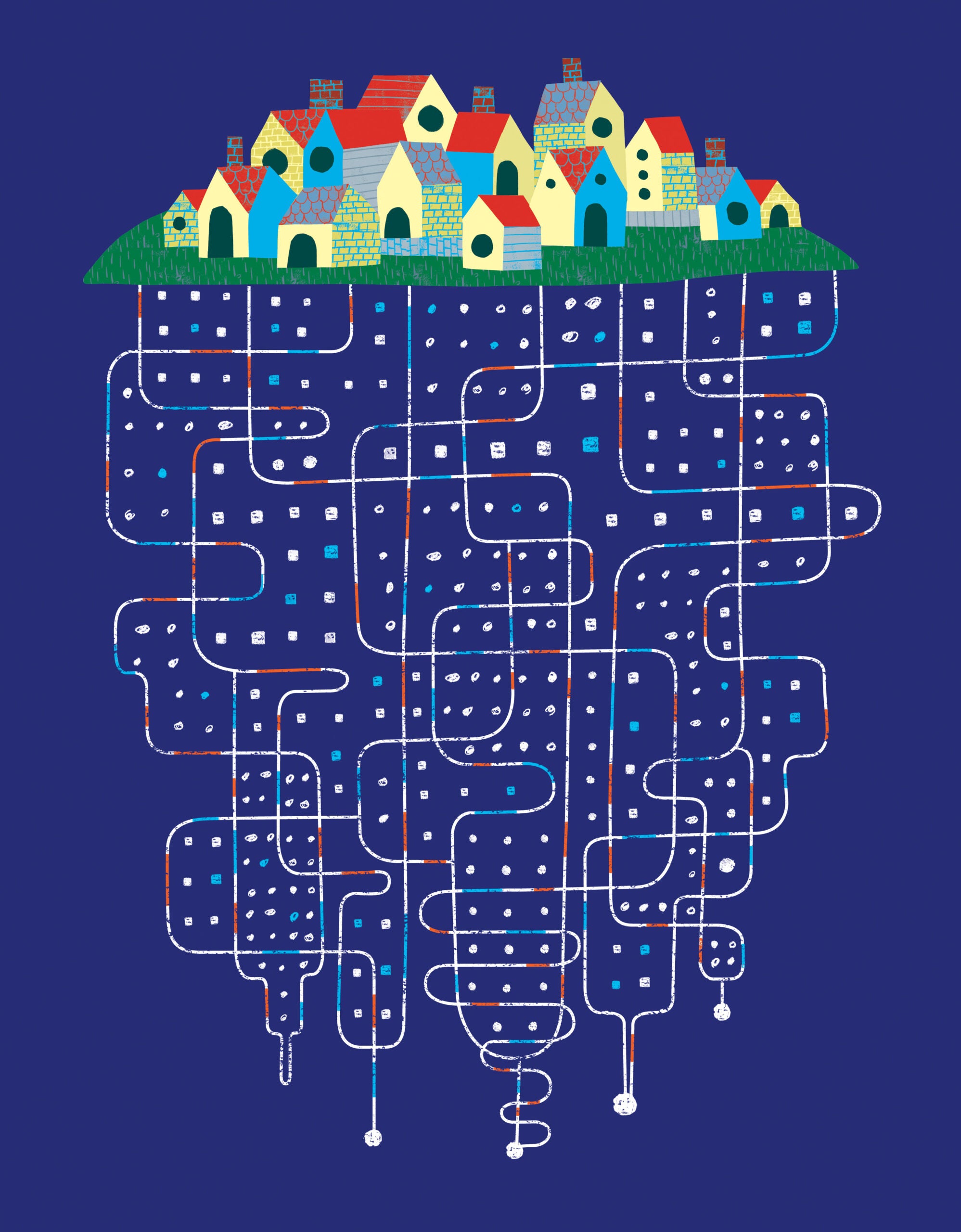Imagine an internet connection so fast and clear that all the musicians in an orchestra can play their instruments from their own homes in perfect time with colleagues scattered across the country. Imagine students in a tiny rural school taking high-level science classes taught by expert teachers 2,000 miles away, with such visual clarity that they can participate in real-time scientific experiments.
That level of internet connectivity is standard in South Korea, Hong Kong, Singapore, Sweden and China. But internet service in most parts of the U.S. continues to be slow, unreliable and expensive. Because of a series of telecom policy decisions, the U.S. is falling further and further behind other nations, with a host of serious implications that affect not only the economy, education, health, and well-being but also the fabric of democracy, says Susan Crawford, clinical professor at Harvard Law School.
On the national level, almost no one is paying attention, says Crawford. And she is out to change that.

Fiber optic technology, which results in dazzlingly fast and reliable internet connectivity, should be available at a low price to everyone in the U.S., just as it is in other countries, argues Crawford in her latest book, “Fiber: The Coming Tech Revolution—and Why America Might Miss It,” published this year by Yale University Press. The contemporary notion of a decent, thriving life “requires a persistent, cheap data network that reaches everyone”—and that means fiber optic technology for everyone, she says.
“Fiber optic plus advanced wireless is going to be the place where all the new industries for the next 100 years are born, where all the new jobs, all the new ways of making a living, come to being,” says Crawford, who served as special assistant for science, technology and innovation policy for President Barack Obama ’91. “We need it—now—to make sure we have a world-class health care system, the best education for our children and the ability to cope with climate change.”
“Fiber optic plus advanced wireless [will be] where all the new industries for the next 100 years are born.”
In the near future, fiber access will be available in 68% of Asia. Meanwhile, due to the deregulation of the telecom industry, the U.S. lags far behind in this critical technology, says Crawford: In terms of average download speed, the U.S. ranks 25th out of 40 nations that are in the Organisation for Economic Co-operation and Development. Fiber connects American cities, but only about 13% of individual homes and businesses, mostly in very affluent places, have fiber optic connections—what’s called “last-mile fiber connectivity.” Most Americans get their internet from a single provider, typically one of five companies that control high-speed internet access. These companies have no incentive to upgrade to fiber.
“We are really not in the game,” says Crawford. Internet providers “have divided markets very successfully. They can charge whatever they want for the services they provide. We’ve got a really stagnant, noncompetitive market.”
But her book is not about technology but rather progressivism, and it tells a story of hope, she stresses. Electricity was once controlled by a few companies and available only to the wealthy. It took “enormous local courage” and the leadership of President Franklin D. Roosevelt, in the face of incredible opposition, to make sure that everyone, despite economic status, received it. Fiber is equally astonishing in what it offers for improving lives, Crawford says, and similarly should be regarded as a public good, a utility service to which every American is entitled.

Crawford places her focus on human stories, including those drawn from the successes of 800 plucky localities in the U.S. that have sidestepped powerful forces to bring fiber to their residents: places like Chattanooga, Tennessee, and rural Minnesota, where 27 tiny townships created a fiber services cooperative to bring first-rate, affordable internet service to farms. It makes good sense at every level, Crawford argues. While costly to install, once laid in the ground, fiber is infinitely upgradeable, and because the lines can be shared by numerous operators, service prices are competitive.
“Localities are just sick of being bossed around. So that’s why they’re building their own networks,” she says. The big internet providers have successfully supported laws in 19 states that now prohibit local governments from supporting fiber optic build-out, arguing that internet service should be a private enterprise. But that’s misleading, Crawford insists—the utility lines themselves should not be controlled privately but instead should be shared by as many service providers as want to jump in, thus driving prices down. The issue of fiber optics “may be highly partisan at the federal level, but at the local level it’s just people wanting everybody to lead a decent life. This really is the seeds of what we’re seeing across the country, this sort of movement toward ensuring that people get their basic needs met at a reasonable cost.”
Crawford, who wrote “Captive Audience: The Telecom Industry and Monopoly Power in the New Gilded Age” in 2014, launched her current book project around the same time during a trip to South Korea, where she witnessed the enormous digital divide between that country, where fiber connectivity is pervasive, and the U.S. A visit to Stockholm shortly afterward drove the point home, during which the mayor asked Crawford how Sweden could help the U.S. get on board with fiber optics in order not to drift into irrelevance. She traveled to Tokyo, Oslo, Hong Kong, and Singapore, which all have 100% fiber adoption, to find out why connectivity was so available and so cheap, with typical prices of $25 to $40 a month.
By contrast, American telecom and cable companies, with no incentive to support fiber technology, are strongly opposing it, including by trying to confuse the issue, she says. For one thing, they are promoting 5G wireless service, the latest generation of cellular mobile connection, as an alternative to fiber. In fact, 5G depends on fiber lines in order to work, Crawford explains, and 5G won’t function in rural areas because it would require cell towers every 200 feet, which is extremely expensive. “It is in their interest not to have people fully understand this issue,” she says. And as the local communities have taken matters into their own hands, the industry has fought back hard.
Crawford got encouragement in her research from then-HLS Dean Martha Minow, who recognized the social justice implications of telecommunications policy. Another supporter, Professor Yochai Benkler ’94, faculty co-director of the Berkman Klein Center for Internet & Society, praises her book. “At this moment in American history, [as we are] facing a deep loss of trust in government and good governance, Crawford’s rich case studies of municipalities that have overcome destructive corporate lobbying to deliver for their citizens is a lesson we all need,” he says.
“Human decency is at our core and should be attached to our policy.”
A key part of the story is that China is planning to connect 80% of their homes and businesses to fiber very soon. Moreover, China is loaning $68 billion to other countries for infrastructure and soon will be touching 65% of the world’s population and 40% of the world’s GDP, Crawford says. She’s hoping that awareness of China’s primacy in this arena “will be a Sputnik moment” for national attention in the U.S. “American companies will have no leverage to be part of that market, won’t be able to reach that global population, and we seem to have no response to that in this country,” she says.
But the U.S. won’t get a massive upgrade to fiber unless there is a concerted effort at the national level. The FCC, she says, should set fiber as the standard for all citizens, so they enjoy opportunities for education, jobs and health care.
“Human decency is at our core and should be attached to our policy,” says Crawford, whose next project is addressing the effect of rising sea levels in Charleston, South Carolina, which poses essentially the same question: What is the role of local government in solving major problems?
While the issue of fiber optic connectivity is urgent and the challenges significan Crawford is optimistic. “America has saved the world from tyranny,” she says. “We built a transcontinental railroad system. We built the federal highway system. We built the Hoover Dam. Americans are capable of this,” she stresses. “And we can turn quickly to projects of national importance. It’s just that we’re a bit in the dark right now about this one.”
